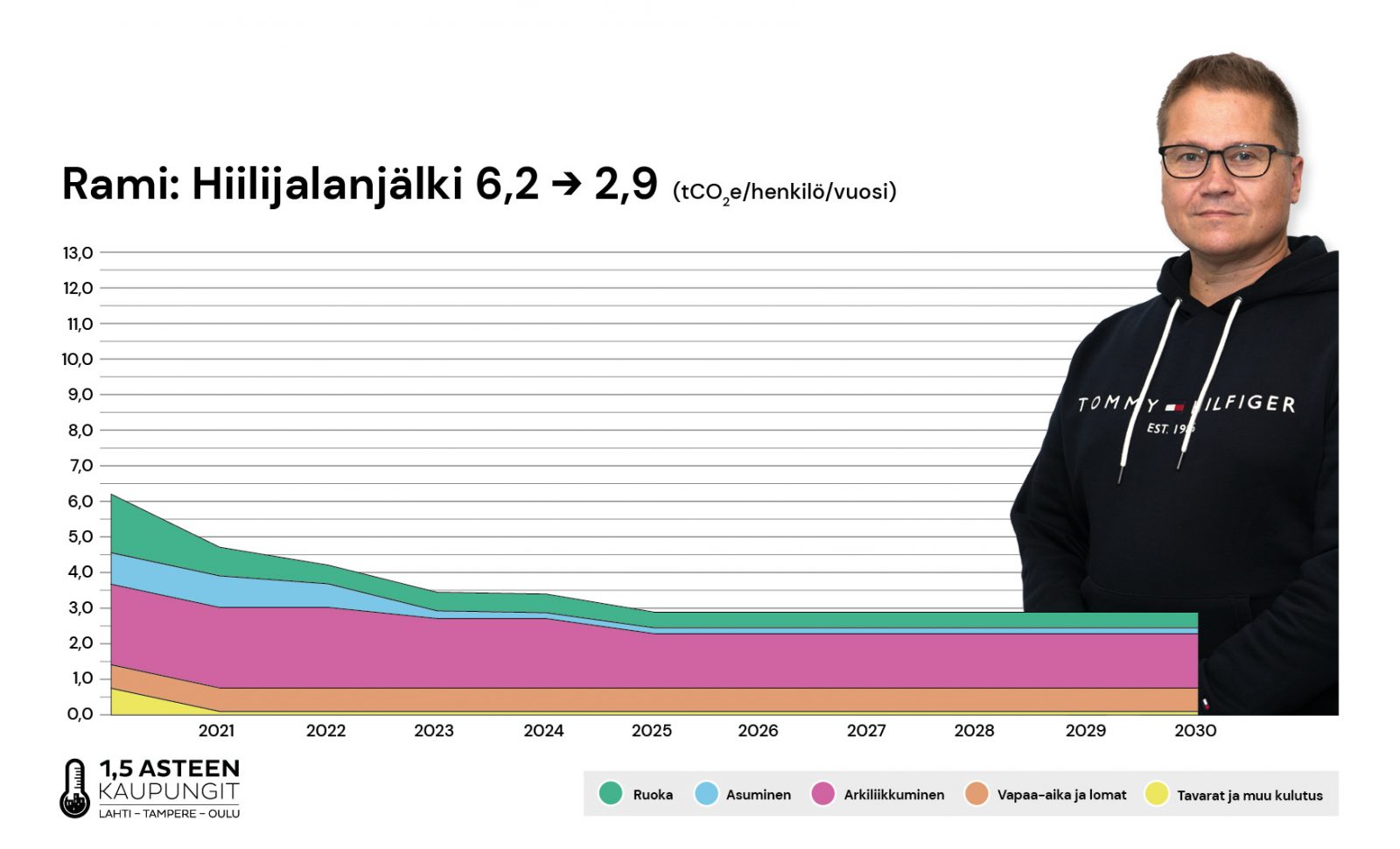A sustainable lifestyle does not have to mean paying more for everything or giving up things you love. I believe that emissions will drop almost automatically as technology develops and we adopt new technologies. Tax breaks can encourage people to voluntarily choose more sustainable options. The Finns Party is not anti-environmental even though that is often said about us.
Having a car, for example, is a necessity for many. People should not be punished for driving by making it more expensive. I could see myself switching to an electric car, but there are not enough affordable charging points near my home or workplace in Lahti at the moment. Charging would always require a trip to a shopping centre or further afield.
I currently need a car to get to the shops and run other everyday errands. Supermarkets in Lahti are all in the suburbs, which means that my wife and I have to drive almost everywhere. I also need a car for my work as an MP, as I have to attend events in all kinds of places and often do not get home from work until late at night. I would not be prepared to pay more for an electric car than for an internal combustion engine at the moment, but I could switch to a smaller car with lower emissions.
I feel almost the same about housing. As we live in a block of flats, I have limited influence on my emissions from housing, however. We have nevertheless thought about moving into a flat with around 20 square metres less space. We can also see ourselves living closer to the services that we use the most, which would allow us to run errands on foot or by bike.
I feel that our pastimes are already largely sustainable. My wife and I spend much of the year on our allotment instead of travelling abroad. We dabble in organic farming and grow a lot of the vegetables we eat ourselves. We also try to buy mostly Finnish food. We feel that Finnish food is of very high quality.
I am not prepared to give up meat altogether, but I would be happy to eat more Finnish wild fish and game and less red meat. I believe that many people would choose locally produced Finnish foods if they were cheaper than products imported from abroad.
I can personally reduce my emissions from food without breaking the bank. We could also consume less food at home. In addition to cutting down on sweets and snacks, we could minimise food waste by planning each week’s meals in advance and by buying more foods that are on sale.
I do not think that Lahti needs to be quite so pioneering when it comes to environmental issues – especially if that makes our daily lives more expensive or more difficult. People cannot be forced to change but must want to make better choices themselves. People should be encouraged to choose sustainable alternatives by lowering their prices instead of making the harmful ones more expensive.
